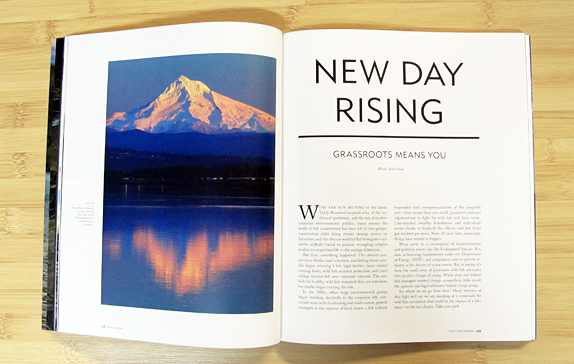THE POWER OF A FEW: GRASSROOTS CONSERVATION IN THE INTERNET ERA
As technology changes the landscape of information accessibility, grassroots activists are able to create a movement from their own home. With new networks of communication and growing armchair advocacy, Rob Elam asks the question: Where do we go from here?With the sun setting on the classic Teddy Roosevelt-inspired ethic of the traditional sportsman, and the rise of modern corporate environmental politics, many assume the world of fish conservation has been left to two groups: conservation clubs doing stream cleanup picnics on Saturdays, and the obscure world of fish biologists—scientific oddballs fueled on passion, wrangling complex models incomprehensible to the average fisherman.
But then, something happened. The obscure conservation freaks, mad scientists, and fishing bums actually began winning a few legal battles; dams started coming down, wild fish received protection, and court rulings favored fish over corporate interests. The outlook for healthy, wild fish remained dire, yet somehow, the misfits began turning the tide.
In the 1980s, when large environmental groups began trending decidedly to the corporate left, concerned more with fundraising and multi-nation growth strategies at the expense of local issues, a few radicals responded with entrepreneurialism of the nonprofit sort—they started their own small, grassroots-powered organizations to fight for wild fish and local issues. Like-minded, wealthy foundations and individuals wrote checks to bankroll the efforts, and law firms got involved pro bono. Now, 20 years later, amazingly, things have started to happen.
Many point to a convergence of macroeconomic and political events like the Endangered Species Act, dam re-licensing requirements under the Department of Energy (DOE), and compliance costs to private industry as the drivers of recent events. But in reality, it’s been the small army of passionate wild fish advocates who pushed change all along. While state and federal fish managers resisted change, sympathetic folks inside the agencies and legal advocates helped things along.
So, where do we go from here? Many veterans of this fight will say we are standing at a crossroads for wild fish restoration that could be the chance of a lifetime—or the last chance. Take your pick…
Subscribe to start your collection of the world’s best flyfishing publication.
